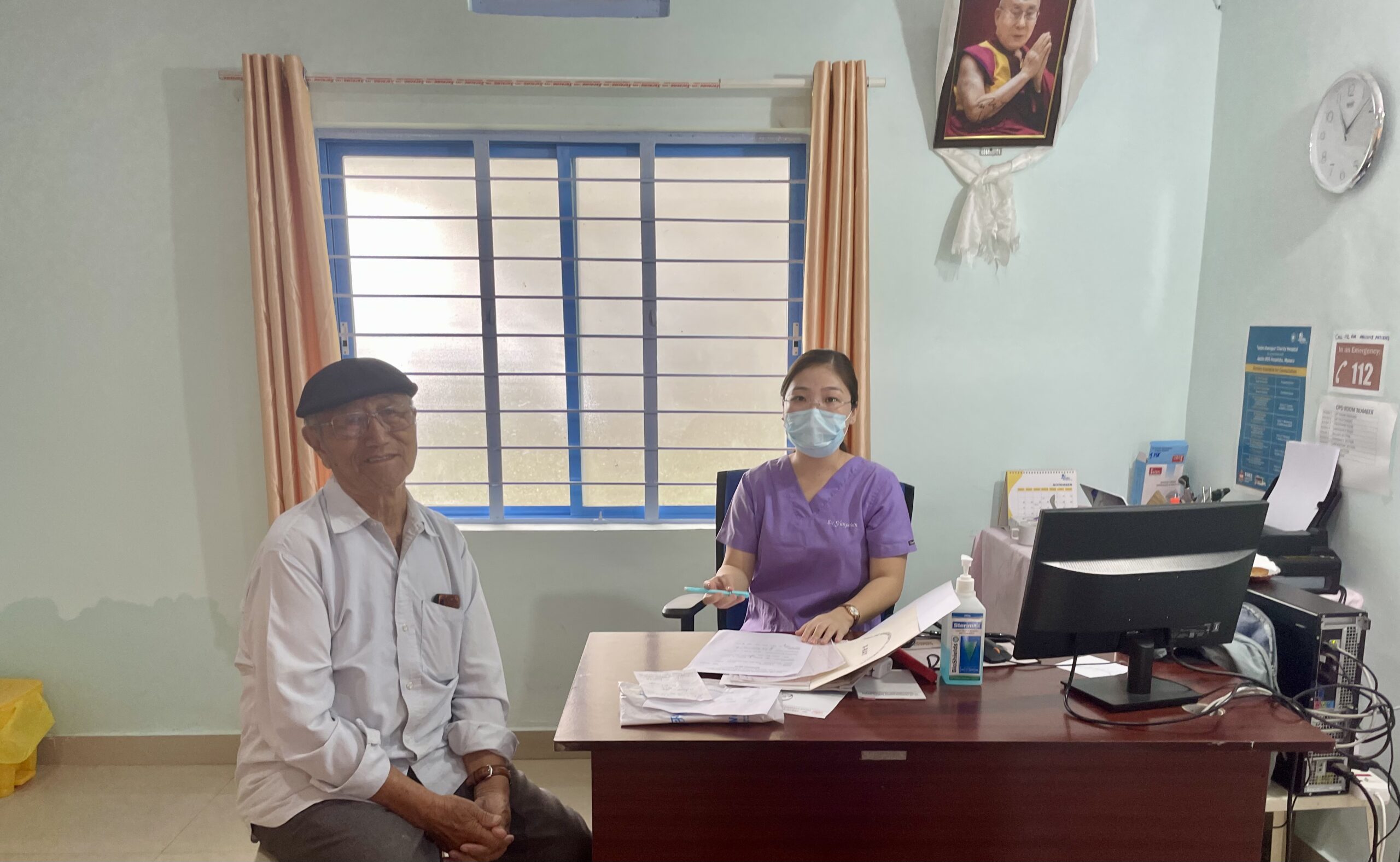Stories from the maternity ward that offers Tibetan families a future
The Tibetan people, unable to live in their homeland due to the Chinese occupation, have been in exile for decades. Most Tibetan refugees now live in India, home to the largest exile communities—including the densely populated settlement of Bylakuppe in the southern part of the country. Thanks to these settlements, Tibetan culture continues to survive, preserving the precious values it holds—first and foremost, the value of compassion.
It is in the Bylakuppe area that the Tsojhe Khangsar Charity Hospital was established, made possible through the generosity of many donors, including the Italian Buddhist Union. This is a place of care and professionalism, providing medical assistance not only to the local Tibetan community but also to Indian citizens in need. Some hospital services are offered free of charge, while others are provided at subsidized costs—ensuring that hundreds of vulnerable and low-income individuals receive essential care each year. This hospital is a true point of reference for the entire area: a place where everyone is welcomed and supported.

Inside the hospital is Dey Drol, a small maternity ward whose Tibetan name means “place where suffering is eased.” Here, mothers and their children are cared for through every stage of pregnancy and birth, up until the child reaches two years of age. Among the healthcare professionals working at the ward is Tenzin Choeden, a midwife and nurse born and raised in Bylakuppe. After completing her nursing training in Bangalore, Tenzin returned to her community with a clear mission: to improve maternal health among Tibetan women.
We asked her to share more about her work and the challenges she faces every day.

What does your daily routine at Tsojhe Hospital look like?
As nurses, our day shift begins at 9 a.m. and ends at 5 p.m. In the general outpatient clinic, we take care of patients, treat minor wounds, and administer treatments prescribed by the doctors—such as injections or IV therapy. The evening shift is covered by two nurses who handle night-time emergencies, including road accidents and sudden fevers.
At the Dey Drol maternity ward, our routine changes depending on the needs of the patients. We receive women who come for checkups or medical advice in the Examination Room. This is also where we perform standard prenatal monitoring, including fetal heartbeat and blood pressure checks. The ward can accommodate up to three patients who require close monitoring—whether for labor or other conditions. And finally, we have our small but essential delivery room: the place where life begins.
Why did you choose to work in the Dey Drol maternity ward?
I was born here in Bylakuppe, and since I was a child, I’ve wanted to support my community. I decided to specialize in midwifery because, unfortunately, there was no local hospital where women could give birth. This created serious problems. Women had to travel two hours on rough roads to reach the nearest facility—an extremely risky journey. Over the years, we’ve lost both mothers and babies because of this. Even now, in cases of complicated births, we must take the risk of transferring the patient to a larger hospital.
I wanted to change that by offering women in my community a safe place to give birth and receive proper care right here. Today, I’m proud to say that Dey Drol sees around thirty births every year, and we care for many more patients through prenatal and postnatal services.
Is there a story that has stayed with you?
Once, we had to manage a birth in an ambulance—we were midway to the hospital. The mother had gone into labor at Dey Drol, but her condition became complicated. Not wanting to take any risks, we rushed her to a larger hospital. On the way there, though, her contractions intensified. We had to stop the vehicle and deliver the baby right there on the roadside. Thankfully, we always carry an emergency birth kit, and thanks to that, we were able to safely deliver a beautiful, healthy baby girl. It was an incredibly emotional day.
How would you describe the impact of your work on the community?
Supporting women through safe, healthy pregnancies is essential—not only for them and their families, but for the Tibetan community as a whole. At Dey Drol, we also provide education and awareness programs on important topics such as sexually transmitted infections, nutrition, breastfeeding, and family planning. In this way, we contribute to the long-term wellbeing of Tibetan families in our community.
Thanks to the dedication of Tenzin and the entire medical team, Tsojhe Khangsar Charity Hospital and Dey Drol are not just places of care—they are symbols of resilience and hope for a people committed to keeping their values alive, even in exile.
Text, editorial revision and photos by Marta Turchetta



